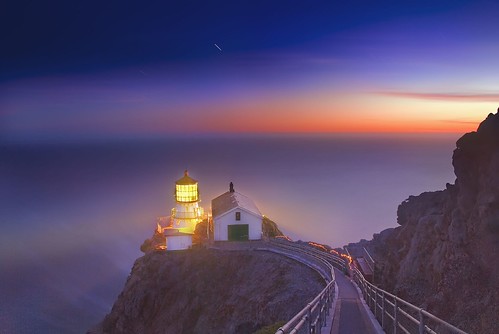When I came back to photography in early 2005, I confronted a world gone digital and virtual. On the whole, I thought this was a good thing, and I was pretty clear that digital photographs are different from film photographs. One thing I didn’t get yet: that physical prints had a place in this new virtual world.
View this image larger. Read the back story featuring this image.
Certainly, I was aware that great traditional print makers like John Sexton were still producing their luminous silver halide masterpieces. But it seemed to me that the place for a digital photo was in the virtual world: to illustrate a blog, to attach to an email, to save a screen, or to join a community like Flickr.
There’s something in this viewpoint, of course. But as time went by, I discovered both that there was some interest in collecting prints made from my digital images, and that the printing technology available to digital photographers was beyond anything I could even have dreamed of in my first career as a photographer.
Color inks like the Epson K3 are truly archival, there’s an astounding array of wonderful paper that you can use, and if you have the right software with good calibration you can accurately control the printmaking process. I’m someone who made my own color prints when this was a messy, unpredictable process. From this viewpoint, my Epson 4800 printer is a dream come true.
Aye, but there’s a virtual and physical rub. Creating great prints today takes working with technology. I prepare my image for printing in Photoshop and print them to the Colorburst RIP. The RIP actually communicates with my printer.
Turns out that Adobe changed the way page size info is written to the Postscript file in the Intel Mac version of PS3. So no matter what size print you make, the RIP thinks it is 8.5X11. Very frustrating, and wasteful of expensive paper, until you realize the problem. (The workarounds, if you run into this, are either to revert to CS2 for printing purposes, or to save your file out as a TIFF and import it directly into the RIP.)
That’s a digital rub. I hit another rub when I started printing on a wonderful new paper, Crane’s Museo Portfolio Rag. Whoops. No Colorburst RIP profile for this paper (actually, not to pick on Colorburst, no one seems to have profiled it). Workaround: I used the Epson Enhanced Matte profile. This is a pretty similar paper, both have some texture and take the matte black ink rather than the more photographic gloss black ink, and the results came out pretty well.
Here’s a physical rub: my Portfolio Rag prints were coming out slightly uncentered. It turns out that this paper is a really thick, and the 4800 grippers seem to move it down .125 of an inch, so you’ve got to uncenter the paper, and set the software to manually over correct the left margin to get it actually centered.
My point here? Well, if you try to print on Portfolio Rag on an Epson 4800, or use an Intel Mac with CS3 and Colorburst RIP, reading this story will save you time and stop you from wasting alot of expensive paper.
More generally, even in the digital era there’s still an impressive amount of craft involved in creating a great photographic print. It’s just that the tools, methods, and techniques have changed. This is a situation that calls for experimentation, practice, and training.
Related story: a vanished pre-digital world, the World Trade Towers photo composed in camera without a computer.

Pingback: Photoblog 2.0: » Photoblog 2.0 Archive: » Petals